Chameleon People - [19]
Miriam smiled her lopsided, mischievous smile as she said this. I smiled back, kissed her and said that I would definitely rather talk to her than Patricia in her luxury palace in Frogner.
‘Have you by any chance ever heard the name Marinus here in Norway? I don’t think he is actually called that, but there must be a reason for him telling me that he was.’
Miriam straightened up and shook her head. ‘No. It’s an ancient Roman name that I’ve never heard used here. In fact, the only Marinus I have heard of since the Middle Ages, is the man who was beheaded after the Reichstag fire in Germany. I can’t remember his surname – Lubbe, or something like that? That was also a very strange story and a sad fate, if I remember rightly. It must have been sometime in 1933, or 1934 at the latest.’
Miriam and bookshelves are a story unto themselves. The first time she came to my flat, she went straight to my bookshelves and stood there for about ten minutes. Now, she was sitting beside me one minute, behaving like a perfectly normal fiancée, the next she was over by the bookshelves at the other end of the room, holding one of her favourite books: a five hundred-page history of the twentieth century in Europe. She flicked through it as fast as she could, then suddenly her face lit up with an almost childishly smug smile.
‘He was called Marinus van der Lubbe – and it was December 1933! A rather disturbed, and almost blind, young man who was made into a scapegoat, even though it would seem that there were far stronger and more wilful parties behind it.’
I jumped up and went over to the bookshelves. Miriam held the book out and looked at me with a triumphant smile. I congratulated her on her excellent memory and immediately took the book.
There was a photograph of Marinus van der Lubbe standing between two prison guards with the Nazi emblem sewn on their uniforms. In purely physical terms, he bore no resemblance to our arrestee in Oslo in 1972. The 1933 Marinus van der Lubbe was a tall, broad-shouldered man in his early twenties, with short curly hair and surprisingly intense eyes. According to the text under the photograph, he had fallen asleep during the trial and had shown many signs of mental distress. However, the similarities in his case and the current situation were striking and thought-provoking.
‘Not everyone who read about Marinus van der Lubbe would be able to see the parallels, to be fair,’ I said slowly. I handed the book back to her, without thinking that it was, in fact, mine.
Miriam smiled, closed the book and put it back in its place, once again with a slightly triumphant air. ‘You can certainly say that. And based on that we can ascertain that the suspect is an unusually well-read boy. But that, of course, does not mean that he is not in some way mentally disturbed. My books on the history of literature are full of examples of people who are well read and totally mad!’ She let out one of her slightly morbid little laughs as she said this, but was soon serious again. ‘Well, we have certainly made a step forwards and you now have a couple of new questions to ask of your mysterious arrestee. Perhaps you should drive down to the station now and see if you can get some answers.’
She looked at me questioningly. I glanced at my watch. As always, the hours had slipped by in Miriam’s inspiring company. It was already a quarter past ten. I had certainly not planned to go out again this evening and did not want to now, either. So I shared my thoughts on the matter. In other words, that I could just as well ask him the questions first thing tomorrow morning rather than late on Sunday night, and that I had some slightly different plans for the rest of the evening.
‘Good,’ Miriam replied. She smiled when she said this. And I smiled back.
XII
Miriam was better than me when it came to falling asleep. Particularly when she had lectures the following morning. She said goodnight at half past eleven and was fast asleep three minutes later.
I lay there and looked at her peaceful face. I would never say it to Miriam, as I wanted her image of me as a hero to remain, as far as possible, intact, but on evenings like this I felt I was not only an incredibly lucky man, but also an undeservingly lucky one. With Patricia’s help, I had gained a reputation and position in the police force that I could never have imagined was possible only five years ago. And thanks to having met Miriam, my private life was better than ever before.
Despite the unsolved case, my life as I knew it still felt good and secure. I found myself hoping that the remaining questions would be answered tomorrow and that we could confirm that the arrestee was indeed guilty, whether he was mentally disturbed or not. However, I still had a sneaking feeling that things would not be that simple. The story from 1932 was so striking that it seemed highly unlikely that it was sheer coincidence that one of the others in the group had now been killed forty years later.
I lay there thinking about it for nearly a quarter of an hour. And then I pondered for a further ten minutes about the boy on the red bicycle and why on earth he had come to my flat. Almost against my will, I found myself wondering what Patricia would have to say about the whole thing.
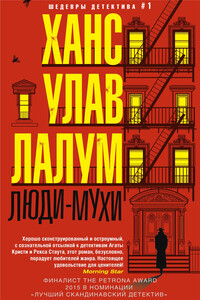
Убит бывший лидер норвежского Сопротивления и бывший член кабинета министров Харальд Олесен. Его тело обнаружено в запертой квартире, следов взлома нет, орудие убийства отсутствует. На звук выстрела к двери Олесена сбежались все соседи, но никого не увидели. Инспектор уголовного розыска Колбьёрн Кристиансен считает, что убийство, скорее всего, совершил кто-то из них. Более того, он полагает, что их показания лживы.
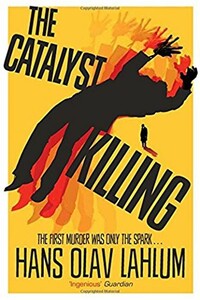
The third mystery in the hugely compelling, bestselling international crime series from Norway's answer to Agatha Christie, Hans Olav Lahlum, The Catalyst Killing will have you guessing to the final clue. The first murder was only the spark… 1970: Inspector Kolbjorn Kristiansen, known as K2, witnesses a young woman desperately trying to board a train only to have the doors close before her face. The next time he sees her, she is dead… As K2 investigates, with the help of his precocious young assistant Patricia, he discovers that the story behind Marie Morgenstierne's murder really began two years ago, when a group of politically active young people set out on a walking tour in the mountains.
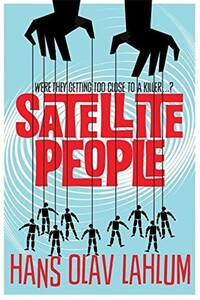
A gripping, evocative, and ingenious mystery which pays homage to Agatha Christie, Satellite People is the second Norwegian mystery in Hans Olav Lahlum's series. Oslo, 1969: When a wealthy man collapses and dies during a dinner party, Norwegian Police Inspector Kolbjorn Kristiansen, known as K2, is left shaken. For the victim, Magdalon Schelderup, a multimillionaire businessman and former resistance fighter, had contacted him only the day before, fearing for his life. It soon becomes clear that every one of Schelderup's 10 dinner guests is a suspect in the case.
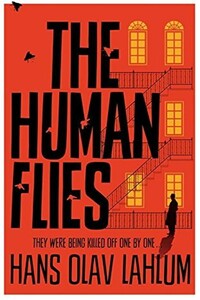
Oslo, 1968: ambitious young detective Inspector Kolbjorn Kristiansen is called to an apartment block, where a man has been found murdered. The victim, Harald Olesen, was a legendary hero of the Resistance during the Nazi occupation, and at first it is difficult to imagine who could have wanted him dead. But as Detective Inspector Kolbjorn Kristiansen (known as K2) begins to investigate, it seems clear that the murderer could only be one of Olesen's fellow tenants in the building. Soon, with the help of Patricia – a brilliant young woman confined to a wheelchair following a terrible accident – K2 will begin to untangle the web of lies surrounding Olesen's neighbors; each of whom, it seems, had their own reasons for wanting Olesen dead.
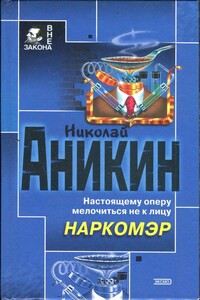
Тупик. Стена. Старый кирпич, обрывки паутины. А присмотреться — вроде следы вокруг. Может, отхожее место здесь, в глухом углу? Так нет, все чисто. Кто же сюда наведывается и зачем? И что охраняет тут охрана? Да вот эту стену и охраняет. Она, как выяснилось, с секретом: время от времени отъезжает в сторону. За ней цех. А в цеху производят под видом лекарства дурь. Полковник Кожемякин все это выведал. Но надо проникнуть внутрь и схватить за руку отравителей, наживающихся на здоровье собственного народа. А это будет потруднее…

«Посмотреть в послезавтра» – остросюжетный роман-триллер Надежды Молчадской, главная изюминка которого – атмосфера таинственности и нарастающая интрига.Девушка по имени Венера впадает в кому при загадочных обстоятельствах. Спецслужбы переправляют ее из закрытого городка Нигдельск в Москву в спецклинику, где известный ученый пытается понять, что явилось причиной ее состояния. Его исследования приводят к неожиданным результатам: он обнаруживает, что их связывает тайна из его прошлого.
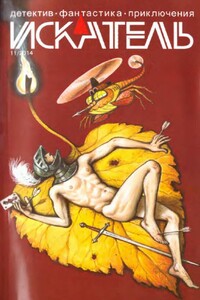
«ИСКАТЕЛЬ» — советский и российский литературный альманах. Издаётся с 1961 года. Публикует фантастические, приключенческие, детективные, военно-патриотические произведения, научно-популярные очерки и статьи. В 1961–1996 годах — литературное приложение к журналу «Вокруг света», с 1996 года — независимое издание.В 1961–1996 годах выходил шесть раз в год, в 1997–2002 годах — ежемесячно; с 2003 года выходит непериодически.Содержание:Анатолий Королев ПОЛИЦЕЙСКИЙ (повесть)Олег Быстров УКРАДИ МОЮ ЖИЗНЬ (окончание) (повесть)Владимир Лебедев ГОСТИ ИЗ НИОТКУДА.
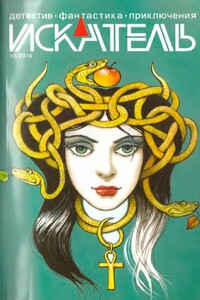
«ИСКАТЕЛЬ» — советский и российский литературный альманах. Издается с 1961 года. Публикует фантастические, приключенческие, детективные, военно-патриотические произведения, научно-популярные очерки и статьи. В 1961–1996 годах — литературное приложение к журналу «Вокруг света», с 1996 года — независимое издание.В 1961–1996 годах выходил шесть раз в год, в 1997–2002 годах — ежемесячно; с 2003 года выходит непериодически.Содержание:Олег Быстров УКРАДИ МОЮ ЖИЗНЬ (повесть);Петр Любестовский КЛЕТКА ДЛЯ НУТРИИ (повесть)
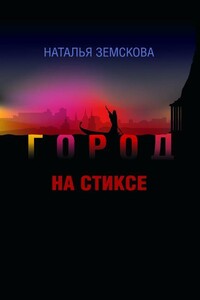
Наталья Земскова — журналист, театральный критик. В 2010 г. в издательстве «Астрель» (Санкт-Петербург) вышел её роман «Детородный возраст», который выдержал несколько переизданий. Остросюжетный роман «Город на Стиксе» — вторая книга писательницы. Молодая героиня, мечтает выйти замуж и уехать из забитого новостройками областного центра. Но вот у неё на глазах оживают тайны и легенды большого губернского города в центре России, судьбы талантливых людей, живущих рядом с нею. Роман «Город на Стиксе» — о выборе художника — провинция или столица? О том, чем рано или поздно приходится расплачиваться современному человеку, не верящему ни в Бога, ни в черта, а только в свой дар — за каждый неверный шаг.
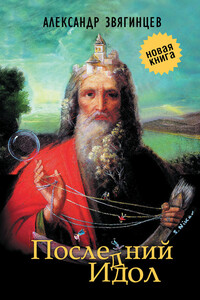
В сборник «Последний идол» вошли произведения Александра Звягинцева разных лет и разных жанров. Они объединены общей темой исторической памяти и личной ответственности человека в схватке со злом, которое порой предстает в самых неожиданных обличиях. Публикуются рассказы из циклов о делах следователей Багринцева и Северина, прокуроров Ольгина и Шип — уже известных читателям по сборнику Звягинцева «Кто-то из вас должен умереть!» (2012). Впервые увидит свет пьеса «Последний идол», а также цикл очерков писателя о событиях вокруг значительных фигур общественной и политической жизни России XIX–XX веков — от Петра Столыпина до Солженицына, от Александра Керенского до Льва Шейнина.